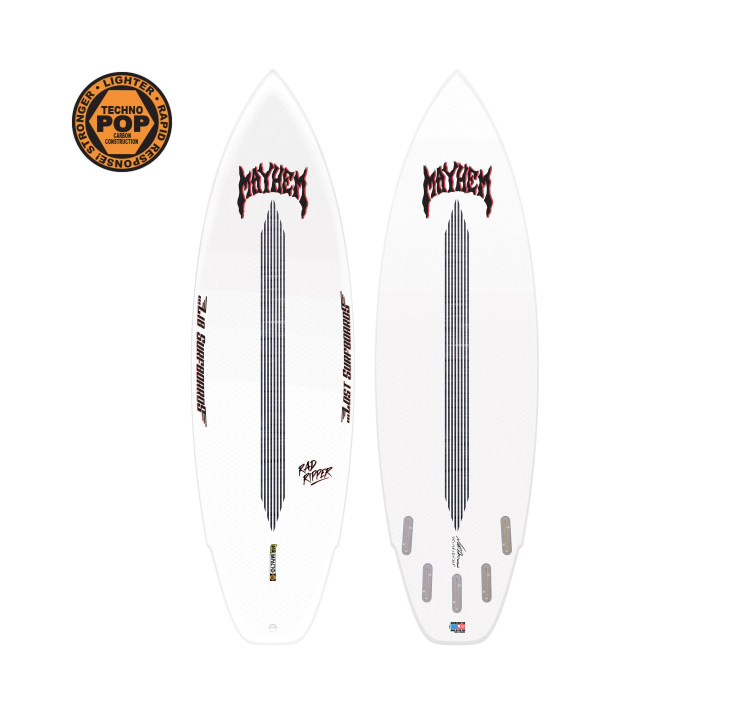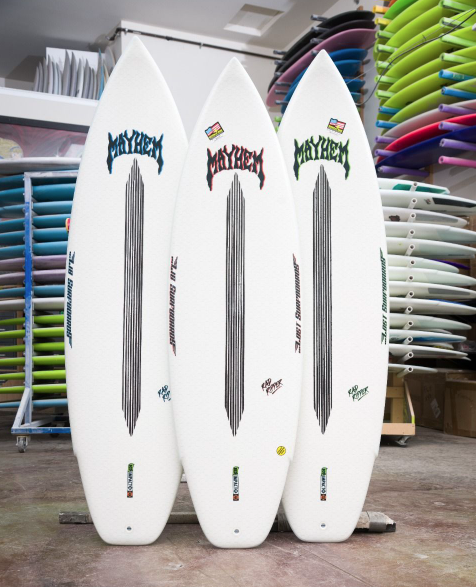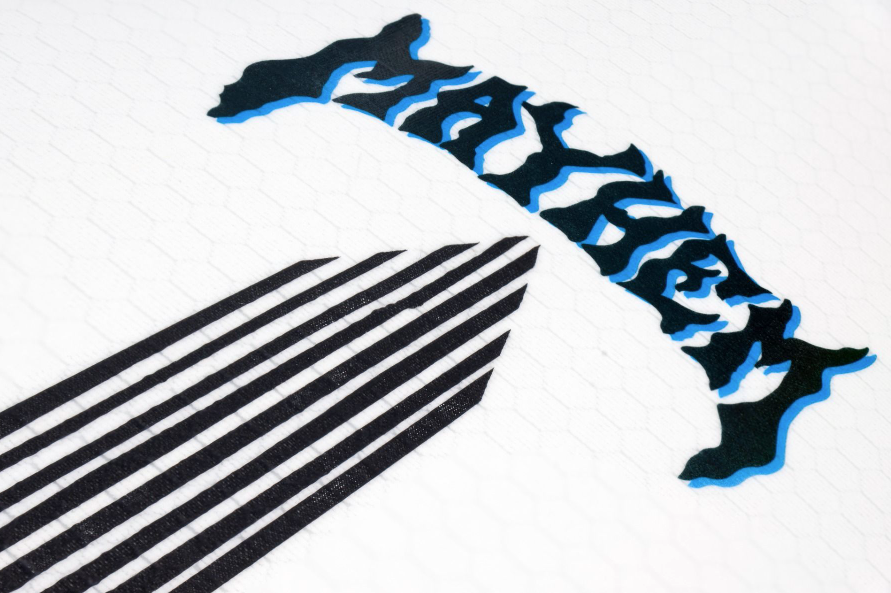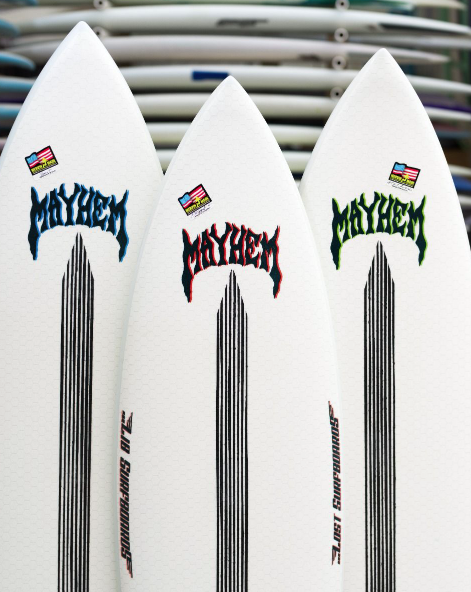Description
Modernized 80s retro squash tail performance. The latest model in Matt’s “Post Modern Retro” collection, the Rad Ripper draws its inspiration from 80s performance shortboards and is scaled for small, to medium everyday surfing. Super-fast, forgiving, user friendly retro fun, featuring modern updates and improvements suitable for almost anyone. Design highlights include; a fast paddling, early entry easy glide and quick starting low entry rocker. A wide plaining squash tail with lots of lift and surface area for small surf. A noticeably healthy amount of tail rocker, cut through by an aggressive double concave, adding even more lift and squirt under the rear foot. The Rad Ripper basically has an engine on the back of it and is ready for everything that puts a smile on your face from ripping through power carves, whipping through threes, gliding through extended floaters, to blasting airs and winning Stab High like Rasta Robb! Built in our lightest weight Techno-Pop construction, it has a nice 80s feel and will take the beatings you give it when it becomes your favorite board.
Highlighted features include:
- Flat, stable deck, with steep, low apex, tucked soft rails.
- Slight vee in nose (to free up the low rocker) into a shallow single concave, into a deep double concave vee, for both speed and control.
- Wide, stable squash tail, glides across anything, and holds speed through turns, even in small summer slop.
- Forward thickness flow, with wedged “beak” nose, for drive and paddle-ability.
*Fins NOT included









